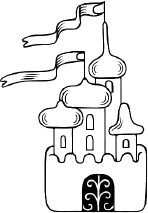

Hugh Lofting · A.A. Milne · W.E. Johns · Carolyn Keene · Franklin W. Dixon · Richmal Crompton · Arthur Ransome · P.L. Travers · Noel Streatfeild · J.R.R. Tolkien · T.H. White
IN JULIET NICOLSON’S SOCIAL HISTORY OF THE INTERWAR years, she writes that it was common to see East End pubs with a row of prams parked outside them, each filled with a wailing child.* Their mothers were out at work and their unemployable fathers, left holding the baby, drowned their sorrows inside. Hundreds of thousands of men had not returned from the war. Many of those who did make it home were physically crippled – the Savoy fixed nailbrushes to the wall in the gents’ so one-armed veterans would be able to clean their nails – or were dealing with what we now call PTSD.
The distinguished journalist W.F. Deedes (1913–2007), whom I knew toward the end of his long life, once told me that the key to understanding the hectic gaiety of the Bright Young People in Evelyn Waugh’s novels was trauma. “What you have to understand about people at that time,” he said, “was that they had suffered the most terrible grief. They were broken-hearted.”
How was children’s literature to respond to such a world, to such a legacy of trauma? One way of dealing with it was to ignore it – or to seem to. That happened, at first. The striking thing about interwar literature is how little the experience of total war registered directly in the stories of the time. Indeed, if we remember that so much children’s writing navigates, consciously or unconsciously, around the childhood not of its audience but of its author, that’s to be expected.
The generation of writers whose own childhoods were shaped by the war and its aftermath – who, like the poet Ted Hughes, grew up with a father who never quite left the trenches – was going to come into its own in the fifties and sixties rather than the twenties and thirties. Yet the mood music was inescapable. The war had not just left heartbreak: it had accelerated a deeper shift in the social order. Women were taking a greater place in the world – the 1928 Representation of the People Act gave them the vote, and their wartime entry into the workplace was not reversed. Parents were taking a greater place in the lives of middle-class children. Homes staffed by cooks, housekeepers and nurses were less and less a middle-class given: by the late thirties there was talk of a “servant crisis.”
All these changes were reflected (or tellingly avoided) in the children’s writing of the time. The period saw the emergence of a huge number of enduring characters – who represented a confidence, freedom, and sense of fun that can perhaps be read as a reaction to the drabness and fear of the war years.
* Juliet Nicolson, The Great Silence, [p].